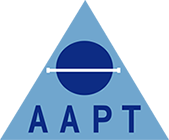News
HPA TSE Working Group Guidance - Annex H updated
Transmissible spongiform encephalopathy agents: safe working and the prevention of infection - Annex H updated
The AAPT were delighted that the Health Protection Agency (HPA) took on board comments from the AAPT Council and have updated Annex H of the TSE guidance. The aim of the guidance is the minimisation of the risk of transmission of CJD and vCJD.
The AAPT also note that the working group followed the recommendation to involve the BIE in order to develop a practical set of guidelines when looking at the issue of embalming deceased patients with CJD or vCJD. The current guidance was published in June 2003, replacing the March 1998 edition. The guidance has evolved in the years since, with new annexes being added and current guidance being updated as further scientific information becomes available, or future policy decisions need to be reflected. Transmissible spongiform encephalopathies (TSEs), otherwise known as prion diseases, are rare, fatal, degenerative diseases affecting the central nervous system (CNS), that occur in humans and certain other mammals.
There are several recognised TSEs, including Creutzfeldt-Jakob Disease (CJD) in humans, bovine spongiform encephalopathy (BSE) in cattle and scrapie in sheep.
The AAPT believe that the updating of Annex H is one of the essential small steps in the right direction. The AAPT are committed to achieving a culture change with respect to work involving practical solutions for real life problems within the arena of SCDs and death & believe that this updated guidance will help the bereaved in the long run as undue distress will be avoided in the future.
Annex H updated available here.
